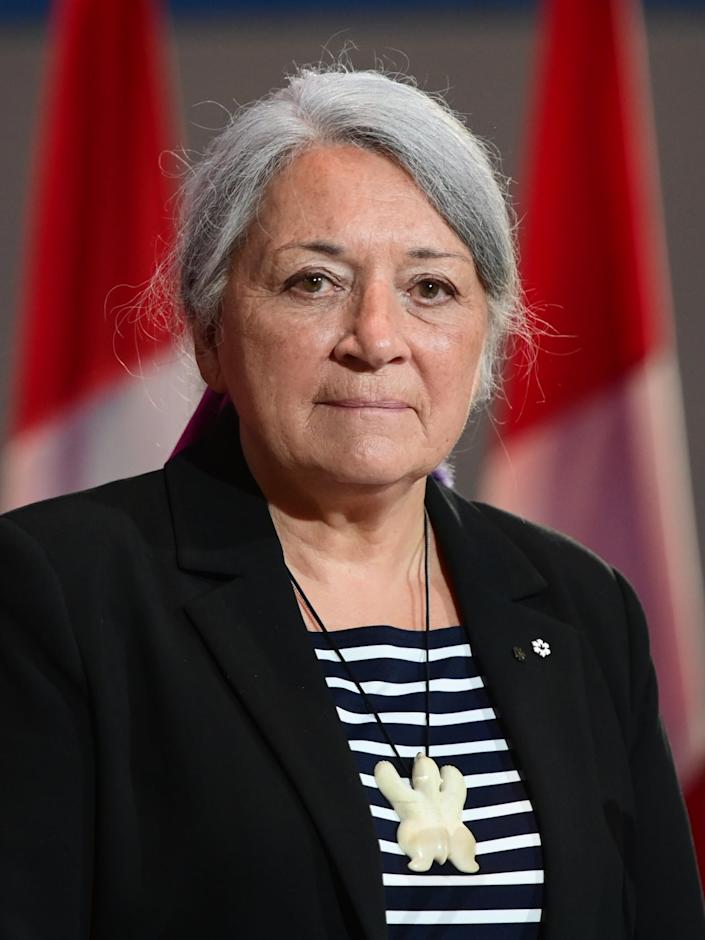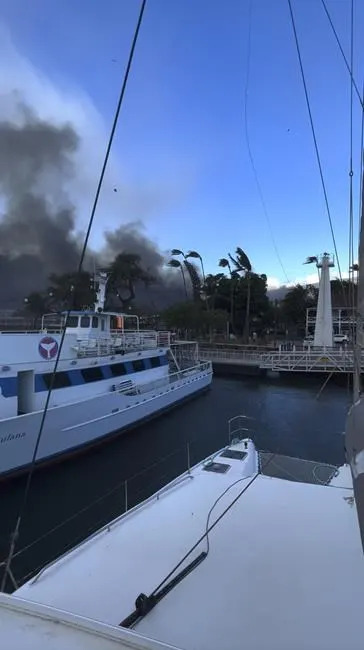
Hip-Hop at 50-Bronx Majora Carter, owner of the Boogie Down Grind, poses for a portrait in the Bronx in New York on Monday, July 24, 2023, in New York. Hip-hop rose from the ashes of a borough ablaze with poverty, urban decay and gang violence. From breaking to graffiti “writing” to MC-ing or rapping, the block parties and various elements of hip-hop served as an outlet for creativity and an escape from the hardships of daily life. Carter, 56, said “I do find it ironic that one of the richest parts of American culture comes from a place that is still one of the poorest parts of our country.”
(AP Photo/Brittainy Newman)
NOREEN NASIR
Wed, August 9, 2023
BRONX, NEW YORK (AP) — Before it was a global movement, it was simply an expression of life and struggle: a culture that was synonymous with hardship and suffering, but also grit, resilience and creativity.
Hip-hop rose from the ashes of a borough ablaze with poverty, urban decay and gang violence. It was music that “had the sound of a city in collapse, but also had an air of defiance,” said Mark Naison, history professor at Fordham University in the Bronx. Block parties and the various elements of hip-hop served as an outlet for creativity and an escape from the hardships of daily life.
The four foundational elements of hip-hop — DJing or turntablism, MCing or rapping, B-boying or break dancing and graffiti “writing” — emerged from the Bronx as a "cultural response to a community that was institutionally abandoned,” said Rodrigo Venegas, also known as “Rodstarz” of the hip-hop duo Rebel Diaz, made up of two Chilean brothers in the Bronx.
“You want to cut our art programs? We’re going to turn the whole city into a canvas. You want to cut our music programs? We’re going to turn turntables into instruments. You want to silence our communities? Then we’re going to grab these microphones and use our voices,” Venegas said.
Subway cars heading into Manhattan were covered in graffiti in the 70s and 80s, after young “writers” tagged their names and messages from top to bottom. At a time when New York City politicians disparaged the Bronx and deemed it unworthy of investment, it was a way for teenagers and young adults to express themselves and take control of their narrative.
“It was a way to feel like we mattered,” said Lloyd Murphy, who tagged his name as “Topaz1." “We saw New York City and the trains going by as a billboard to put your name on and say, ‘I’m somebody.’”
Hip-hop eventually expanded across New York City, then to different parts of the country and the world. But as artists and hip-hop giants mark the 50th anniversary of a multi-billion dollar global industry this month, the original birthplace of the movement remains the poorest section of New York City. The Bronx has yet to capitalize off of the culture it created in any significant way.
At the time of hip-hop's inception, the Bronx had the highest poverty rate of not just New York City, but of all 62 counties in New York state. Fifty years later, it holds that same status.
“I do find it ironic that one of the richest parts of American culture comes from a place that is still one of the poorest parts of our country,” said Majora Carter, an urban revitalization strategist and founder of The Boogie Down Grind, a cafe in the South Bronx that has images of old hip-hop party flyers from the 70s and 80s lining the walls and classic hip-hop jams playing over the speakers. Carter, 56, grew up just blocks away from where the cafe now sits in Hunts Point and lived the realities of urban blight. Her brother was killed in gang violence and she saw her neighborhood fall prey to drugs, prostitution and violent crime throughout her childhood.
The earliest hip-hop culture was a reflection of those difficult realities in the South Bronx.
“Poverty was the flavor of the day,” said Murphy, who also grew up in the South Bronx in the 1960s. He remembers multiple families crammed into public housing units, sometimes up to 15 people living in a two or three-bedroom apartment, sharing the space with rats and roaches and dealing with negligent landlords.
New York City as a whole was facing bankruptcy in the 70s, and the Bronx, which was already suffering from disinvestment, redlining, resident displacement and white and middle-class flight, descended into urban decay. Privately-owned housing buildings across the borough went up in flames, often set ablaze by landlords themselves for insurance money. The Bronx was on fire, and Vietnam veterans – often missing limbs, addicted to heroin and other drugs – found themselves returning home to a war zone. Life in the Bronx was bleak, and Murphy said his neighborhood of Fort Apache was infamous for its violent crime.
“The world was not flowers and butterflies and sunshine, especially if you were living in the Fort Apache section of the South Bronx,” said graffiti writer Edward Jamison, also known as “Staff 161.” In December, 1972, Jamison painted an entire subway car with an image of the Grim Reaper, “because that’s what I knew.”
Originally, the Fort Apache neighborhood was supported by the Black Panther Party. They worked security and distributed food through programs around the neighborhood. When they left, block crews filled the void. Those turned into street gangs.
“A block crew was the protector of that block and the street gang was the security for the community, more than the police department,” Murphy said. “We felt forgotten. We felt like we were our own world where we just had to fend for ourselves. And we did.”
It took the murder of peace keeper “Black Benjie” of the Ghetto Brothers, a gang and music group in the South Bronx, for rival gangs to convene and sign a peace treaty. It was this truce that paved the way for block parties to be held in the Bronx, and for residents from different neighborhoods to attend them freely, without fear of street violence.
In the wake of that peace treaty, 18-year-old Clive Campbell, also known as DJ Kool Herc, threw a back-to-school party with his younger sister in the recreation room of an apartment building on Sedgwick Avenue one August day in 1973. Herc introduced the attendees to “the break” – extending the musical beat between verses to allow for longer periods of dancing. A musical phenomenon was born.
“It’s very easy to look at the Bronx during this period in terms of deficits, redlining, disinvestment, white flight, the loss of economic opportunity,” Naison said. “But during those years, the Bronx was also creating more varieties of popular music than any place in the world.”
For those who call the Bronx home today, it can be an uphill battle to counter the narrative that their neighborhoods are a lost cause.
“We’re literally trying to give people reasons in our community to feel as though there’s something worthwhile about it – that all of the hype that we hear in the media about how awful these neighborhoods are, that there are actually amazing things going on in them,” Carter said.
After years of proposals, the Universal Hip-Hop Museum is expected to open its doors in 2025. The hope is that the development, which will include affordable housing and retail space, will make the South Bronx a destination for tourists and New York City residents, and will capitalize off of the legacy of hip-hop.
But in the poorest section of New York City, some are cautious when it comes to new buildings. The Mott Haven neighborhood, a waterfront enclave located in the South Bronx, has undergone a wave of new development in recent years, and many residents fear gentrification and displacement. In 2021, the poverty rate for the district that includes Mott Haven was about 36%.
“You have hip-hop museums being built in The Bronx that I view, personally, as concessions to the real estate buyouts that have been happening here,” Venegas said.
Venegas and his brother grew up in Chicago but formed their musical identities after moving to the Bronx in the early 2000s. They lead workshops and host events at the BronxArtSpace to support the culture of hip-hop in the Bronx as the birthplace of the movement, with a particular emphasis on using it as a tool in struggles against oppression, from the Bronx to around the world.
"We’re trying to maintain the legacy of hip-hop through liberation,” he said.
Amid the commemorations and celebrations marking the 50th anniversary of hip-hop, the Bronx basks in a momentary spotlight for its contributions to a global movement. For the early pioneers who shaped and molded an entire culture out of their daily plight, that value can’t be fully measured.
“These kids had everything taken away from them, and they created something to give their lives direction, meaning, safety, and a sense that their talent meant something,” said Mark Naison. “Big money? Nobody involved in Bronx hip-hop made big money. But they saved lives. They gave lives meaning.”























